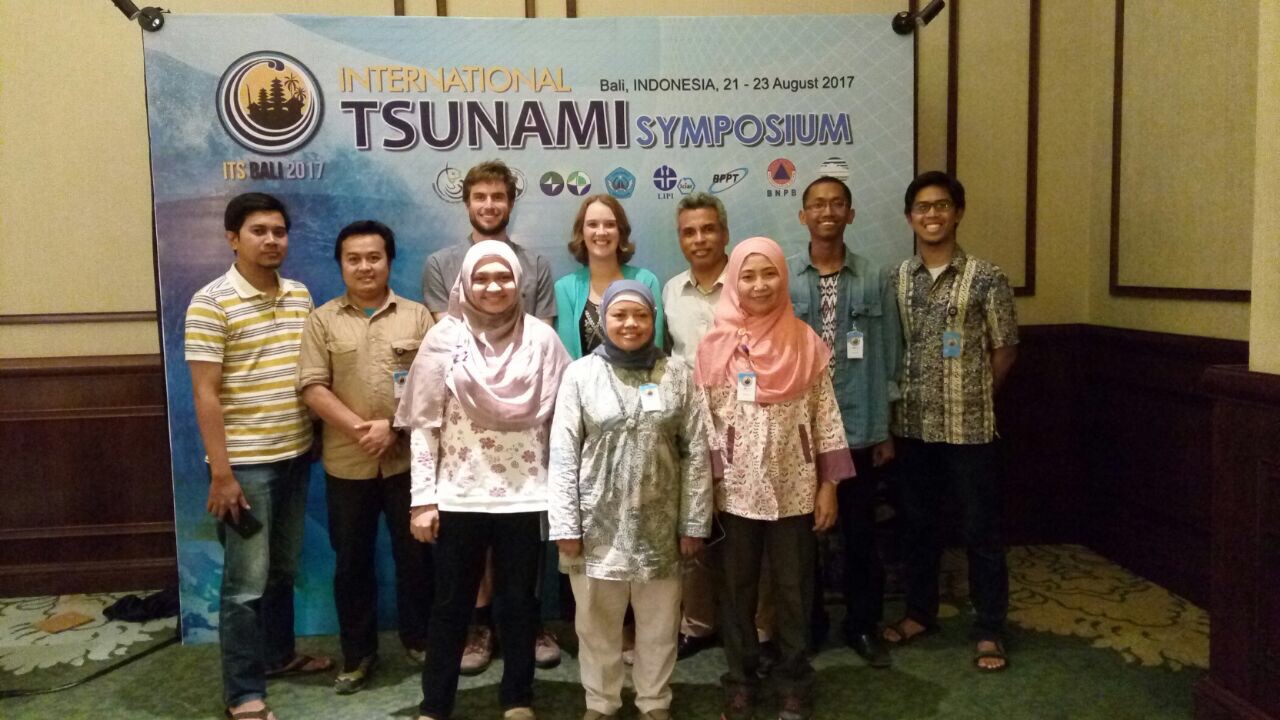News
International collaboration strengthens tsunami response
Published:3 November 2017
International collaboration strengthens tsunami response
Preparation is the key to reducing the impact of a tsunami, which is why Australia is focused on maintaining our early warning systems and working with our neighbours to develop better strategies to manage tsunami risk.
Tsunami know no borders, making international cooperation essential to developing and implementing effective risk reduction measures. The United Nations General Assembly has therefore designated 5 November as World Tsunami Awareness Day to promote a global culture of tsunami awareness.
Over the past 20 years over 11 million people worldwide have experienced a tsunami, the most notable being the 2004 Indian Ocean earthquake and tsunami that affected up to five million people in 15 countries. While Australia's tsunami risk is considered lower, we are still vulnerable from both the Pacific and Indian oceans.
Joint Australian Tsunami Warning Centre
The 2008 National Probabilistic Tsunami Hazard Assessment showed that the tsunami hazard faced by Australia ranges from relatively low along the southern coasts of Australia to moderate along the west coast of Western Australia. This area is more susceptible because of its proximity to large subduction zones along the south-coast of Indonesia, which is a region of significant earthquake and volcanic activity. This assessment is considered by the members of the Australian Tsunami Advisory Group for prioritising where the State and Territory governments will direct effort in preparing for tsunami.
The Joint Australian Tsunami Warning Centre (JATWC), operated 24/7 by Geoscience Australia and the Bureau of Meteorology, is the authority for issuing tsunami warnings for Australia and its offshore territories.
The JATWC monitors for earthquakes with potential to cause tsunami, and forecasts expected wave heights and arrival times for the Australian coastline, providing the public, media, emergency managers and other relevant authorities with tsunami warnings. The JATWC is supported by an early detection system that includes seismographs close to earthquake source zones, and deep ocean buoys that provide instant alerts and verification of sea level changes caused by a tsunami.
In October 2011, building upon this expertise, Australia, along with India and Indonesia, became one of three countries providing real-time, rapid-response tsunami information to countries bordering the Indian Ocean. This advice supports these countries in issuing timely and confident warnings to potentially affected coastal communities.
Working together with our Indonesian partners
Indonesia is one of the most tsunami-prone countries in the world. On average, there is a deadly tsunami once every three years somewhere in Indonesia.
Geoscience Australia has a long history of collaborating with Indonesian technical agencies, over the last 10 years and has supported Indonesia to develop a range of strategies to help reduce its tsunami risk, through Australian Aid funded projects. This collaboration has helped local Indonesian authorities to strengthen the evidence base for informed disaster management by investing in improved hazard information, spatial data and better decision support tools.
A major component of this program has been to work with our Indonesian partners to help them update their tsunami warning system; and to collaborate on local scale tsunami hazard maps, to ensure Indonesia is better prepared for a tsunami event. This year Geoscience Australia further collaborated with the Indonesian Agency for Meteorology, Climatology and Geophysics (BMKG), our counterpart agency in the Government of Indonesia to update the update to the Indonesian Tsunami Early Warning System. Prior to this update the system only issued warnings for the western half of the country; now the system can issue warnings for the whole country, making Indonesians and tourists safer in the event of a tsunami.
Geoscience Australia's ongoing collaboration with counterparts in Government of Indonesia has also helped to produce local scale tsunami hazard maps in priority areas. These maps are used by Indonesian Government departments and local disaster managers to communicate tsunami hazard to local communities, and create contingency and evacuation plans. Examples of this work were recently presented at the International Tsunami Symposium held in Bali in August 2017.
 Australian and Indonesian hazard researchers sharing expertise at the International Tsunami Symposium in August 2017
Australian and Indonesian hazard researchers sharing expertise at the International Tsunami Symposium in August 2017
With the main tsunami hazard for Australia coming from earthquakes originating near Indonesia, the work undertaken in Indonesia has a dual purpose; making it useful to help improve knowledge of tsunami hazard in Australia. Geoscience Australia is also currently working to towards updating the Australian Tsunami Hazard Map, and is drawing on the valuable knowledge and information developed through our partnership with Indonesian agencies.
Further information:
- Scientific Topics: Tsunami
- Australian Disaster Resilience Knowledge Hub: Tsunami: The Ultimate Guide
- Ten Years On: 2004 Indian Ocean Tsunami
- Applying science to disaster risk reduction
- Sendai Framework for Disaster Risk Reduction
- United Nations Office for Disaster Risk Reduction
Contact:
Phone:
Email:




